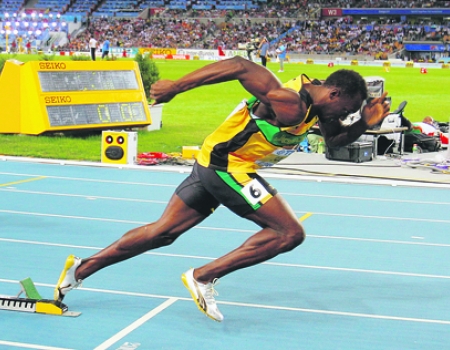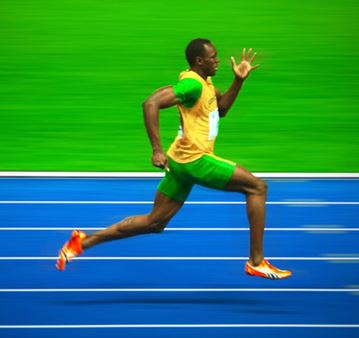Imagine a scenario where a coach says “my athlete is just too fast.” Oh, you can’t? That’s because it will never happen.
Speed is a skill (you gotta learn it – and earn it!). It’s not something you either have or you don’t. Sure, genetics play into it, but I’m certain that high school athletes can improve their speed and it doesn’t have to be complicated.
I’ll keep the introduction brief and dive right into some strategies that will help pretty much all high school athletes develop speed through proper training.
3 Strategies to Improve Speed
Improve Total Body Strength
[bctt tweet=”Lift weights. Strength training will not slow you down. It will not make you bulky. And it will not make you immobile.” username=”skillofstrength”]
The simplest way to improve strength for high school athletes is to perform three days of total body lifts. Here’s a very simple template that pretty much guarantees results (when done consistently with solid technique). SeTS and reps will vary based on goals, number of training days and session lengths.
Day #1
- Deadlift
- Pull-up
- Dumbbell press
- Split squat
Day #2
- Single leg squat
- Inverted row
- Single arm dumbbell press
- Prone row
Day #3
- Squat
- Chin up
- Walking lunge
- Pushups
High school athletes need simplicity, not complexity. If you are a coach that works with high school athletes, you don’t need to worry about French contrast training, post activation potentiation or how to determine the appropriate height for depth jumps.
Instead you need to focus on the following things when strength training:
- Proper technique
- Appropriate weight selection
- Training with intent and effort
- Consistency
- tracking progress
If you spend a solid 8-12 weeks training this way, You will get stronger… and faster.
Technique Development – Acceleration

Running is a skill and learning how to accelerate properly it is something that every high school athlete should practice.
I like to start by implementing a track-based starting position. This start position accomplishes several things:
- A “low” position – vital for starting speed and reinforcing good posture for acceleration
- Static work on opposing limb reciprocation – improves speed
- You can feel how to distribute your bodyweight in each foot – in the right position, the front leg musculature should wake up relatively quickly
Next, spend time dialing in technique, focus on developing athlete-appropriate stride length and get lots of reps practicing speed development.
Focus on 10 and 15 yd sprint repeats with plenty of recovery. You can safely increase volume over time and this normally doesn’t tax an athlete too much. Each sprint will be under :3 and :40-:60 of recovery after each rep seems to work well.
https://www.facebook.com/SkillofStrength/videos/975563546167250/
Tempo Running – Top End Speed Development
If you want to run fast, you need to practice running fast. It sounds simple, but this statement is incredibly accurate and includes every aspect of speed training.
[bctt tweet=”Tempo running is probably the most overlooked and underutilized component of speed training.” username=”skillofstrength”]
Tempo running is fantastic for:
- Improving stride length
- Development and reinforcement of top speed mechanics
- Improving aerobic fitness
I’m not talking about the style of tempo running that competitive runners will use. Let me explain how to apply this into a program for a high school athlete, not a competitive runner.
Find a field or an area that gives you enough room to approach top speed. This can be anywhere between 40 and 100 yards.
After a good warm-up, accelerate and run at approximately 85% max effort. This should be hard work, but very doable. Focus on improving your stride length, maintaining a nice tall posture and staying relaxed when you run.
From a programming standpoint, I start by using a 1:7/1:8 work to rest ratio. So if your tempo run takes you 10 seconds, you will rest 70 to 80 seconds after each rep. Start with anywhere between 8 to 12 repetitions total and add 1 rep each training session.
These three simple strategies will absolutely improve your linear speed development. The key is to train consistently…and with effort. Always have a goal for each training session so you’re being intentional with training versus simply getting out to exercise.

